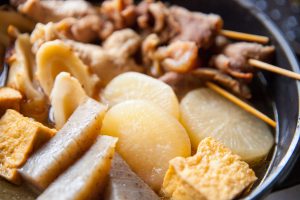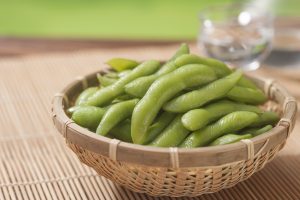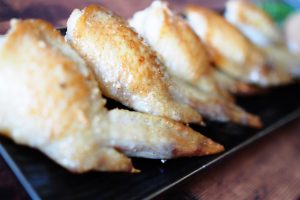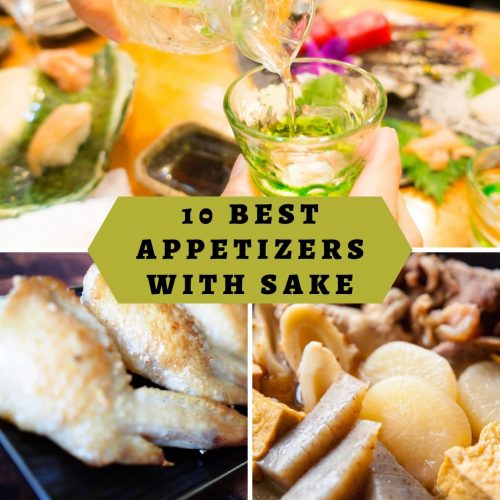Just as there are many kinds of sake on the market, there are also many kinds of Japanese otsumami (sake appetizers) to pair with them. Here, we pick our top 10 best appetizers for sake. Some of them might seem/taste a little weird to you at first, but each of them is worth trying if you find one or more on a restaurant menu.
1. Una Tama
Una-Tama is eggs (tama) and freshwater eel (unagi) in an omelet. If you hate sashimi or fresh raw fish, no worry, because unagi is always served cooked—usually broiled with BBQ style “unagi sauce.” For a more traditional flavor, dashi (soup stock made from bonito flakes) may be used instead of unagi sauce.
2. Nuta
Nuta is miso and vinegar-based dressing. It tastes a little salty, sour and sweet which enhances the flavor of seafood such as sliced octopus’ legs and vegetables like cucumber and seaweed. Cold seafood nuta refreshes your palate and stimulates appetite.
3. Oden
In Japan, oden is a ubiquitous wintertime appetizer you can find in every convenience store. It is a one pot dish consisting of a variety of ingredients such as fish cake, boiled egg, daikon, and konnyaku stewed in dashi broth. You can pair oden with nuru-kan (slightly warmed sake). Don’t forget to add Japanese mustard (karashi) for some extra pep. And remember that day-old oden tastes more flavorful and better than freshly made one.

4. Gindara
A formal name for Gindara in English is “sablefish” but it is generally known as “black cod.” Many Japanese restaurants serve Gindara as one of the most popular dishes among American customers. Gindara is usually seasoned with saikyo miso or sake kasu (sake lees), both which enhance its flavor and make it an excellent pairing for sake.
5. Dashimaki Tamago
Dashimaki tamago is rolled pan-fried egg omelets flavored with dashi broth. In Japan, many people believe you can tell the restaurant’s food quality by just looking at their dashimaki tamago, because the time-consuming and intense labor required to make it reflects the skill of the chef (although nowadays most restaurants don’t bother making it themselves, but purchase pre-made frozen ones). Dashimaki tamago tastes even better with grated daikon radish.
6. Yellowtail Carpaccio
Yellowtail carpaccio may be one of the most successful “fusion” dishes. In the 1980’s only a handful of restaurants served Yellowtail carpaccio in Los Angeles, but today you can even order it at your local ramen house. Freshness of the fish is crucial, using Yuzu citrus instead of lemon makes it even more flavorful.
7. Ika Gesso Karaage
Ika Gesso Karaage is deep fried squid tentacles. It is not gourmet dish, but if you enjoy chicken karaage you will most likely enjoy ika gesso too. Properly cooked ika gesso should be crunchy outside but tender inside—just like great fried chicken.
8. Edamame & Ginnan
Everyone knows edamame—immature soybeans in the pod. Their name literally means “branch bean,” and they are a popular healthy snack in Summertime. Besides edamame, ginnan—the edible nuts of the gingko tree—are also popular at Japanese Izakaya.

9. Mozuku
Mozuku is an edible algea cultivated in Okinawa. Its slimy texture may be a bit challenging for first timers, but mozuku has become more popular throughout Japan because of its anti-aging properties (Okinawans are known to be live longer than any other prefectures). If you drink sake moderately, and eat mozuku often, you may enjoy a long life.
10. Tebasaki
Tebasaki—literally meaning “wing tips”—is Japanese style chicken wings. This appetizer is originally from Nagoya but is so popular today that you may find real Nagoya-style tebasaki at Nagoya-style Japanese restaurants in the US—such as Fukurou in NYC. Tebasaki is deep fried and then marinated with sweet and spicy sauce; and its rich flavor is best paired with equally rich sake like Kurosawa Junmai Kimoto.


